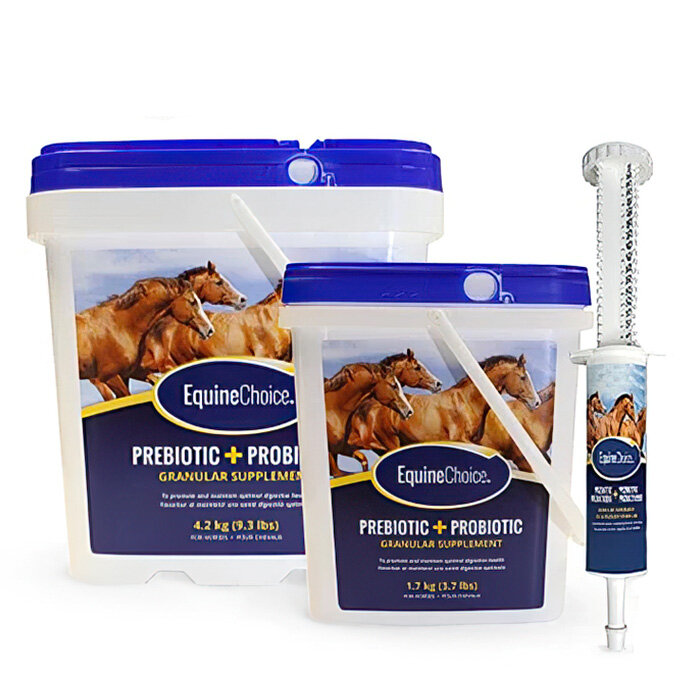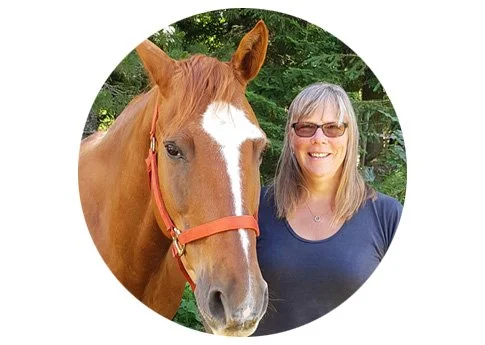Should you be worried about mycotoxins in horse feed or forage?
The following information should not take the place of Veterinarian care.
Please note: Some of the content embedded in this article was provided by Stance Equitec Knowledge base.
This is a longer post so grab a beverage and settle in…
I didn't really know much about this topic until I began using Equine Choice Pre+Probiotics and then added Zeolite clay to my horse daily feed. I went much deeper down the rabbit hole when I began using and carrying the Stance Equitec line of products in my store. Mycotoxins are insidious and seem to be almost everywhere – especially in hay and forage.
One of our EAL program horses, Coby, originally came from a place where he may have had unfettered access to haylage or feed suitable for cows. He was doing okay when he first arrived at our place from Alberta but when he came back to us last spring, he had some symptoms similar to ulcers/digestive issues. He also had a sullen look to him and his energy was just not right —he was definitely not the Coby that I had brought from Alberta just 18 months before. I’ve come to realize that sometimes we need to distinguish between a product like GastroBuf (for treating hind/foregut issues/ulcers) and ReMove. In Coby’s case I decided to start with ReMove and see if there was improvement.
The great part about ReMove is that you can give it for twelve days and if it is what is needed you’ll certainly see evidence you made the right choice. Within two or three days Coby seemed to emerge from the fog. He was more alert and started to behave more like his old self.
What I have noticed is that mycotoxin toxicity seems to be a threshold thing… you can knock the threshold down, but sometimes it jumps back up if the source is not identified. It’s very difficult to discern if it’s a mycotoxin build up that’s been happening over time, or if it’s present in our current hay/forage source. Often we either can’t change our hay or pasture – or it is not affordable/feasible to make that change. In either case I would say that ReMove is a great tool to have in our toolbox and I feel more confident having it on hand.
It is empowering to use natural products to promote and support our horses’ health. I would far rather treat with a naturally sourced nutritional product and see if it can help as opposed to using potentially harmful prescription medicine… at least to begin with (and of course this depends on the severity of the symptoms!).
SIGNS OF MYCOTOXIN POISONING
Symptoms can vary widely but may include:
Itchy skin and/or hair loss
Skin challenges
Stiffness
String-halt/staggers
Wasted top-line
Sunburnt nose
Respiratory stressors
Odd sweating
Coarse, dull coat
Persistent greasy heel/rain scald
Unexplained spookiness and dangerous behaviour
Mycotoxin poisoning may also cause the following without any obvious signs:
Depleted minerals in the body
Decreased immune function
Negative impact on the kidneys, liver and reproductive system
SO WHAT ARE MYCOTOXINS?
Mycotoxins are toxic chemical compounds produced by moulds which are members of the fungi group of plants. Generally speaking, the term mycotoxin is used for moulds that readily and easily colonise crops. Like bacteria, mould spores are ubiquitous in the environment. All herbivores come into close and constant contact with moulds daily - they can be both inhaled and ingested. The mould spores are microscopic and use oxygen to digest organic matter wherever the temperature and humidity levels are sufficient. In optimal conditions, they multiply and form colonies. Their toxic metabolic products are then present in even higher concentrations. The toxins are not needed for their growth or development but are maybe used to depress the immune system of the host plant. This could be a strategy for helping the colony to grow. Toxin production varies greatly with internal and external environmental conditions - there are often multiple toxins produced by the one colony and the same toxins can be produced by other species of mould. While the mould organisms themselves can be killed with heat and digestion, the toxins are very resistant to digestion, heat and cold.
EXAMPLES OF MYCOTOXINS
Aflatoxins - produced by Aspergillus spp - more common in plant products produced in the tropics and subtropics eg. Cotton, corn, peanuts, spices. It can cause liver cancer in animals.
Ochratoxins - produced by Penicillium and Aspergillus spp - can be contaminants in beer, wine and fruit juice. They are mainly nephrotoxic and affect kidney function.
Citrinum - produced by Penicillium Citrinum - used in cheese making, sake, miso and soy sauce. They can be nephrotoxic in animals.
Ergot alkaloids - produced by Claviceps spp - these mostly colonise grasses. Contaminated grain when ingested can lead to symptoms of gangrene or convulsions.
Patulin - generally found on mouldy fruit and vegetables - reduces the efficiency of the immune system. Fusarium - generally found on wheat and corn.
Fumonisims affect the central nervous system of horses.
Trichothecenes can cause both chronic and potentially fatal toxicities in animals and people.
Penicillin - produced by the Penicillium spp - which is a mycotoxic compound of enormous benefit to animal and human life while toxic to bacteria and some other fungi. There are other mycotoxins that are also antibiotics and others that are used for other pharmaceutical benefits.
SIGNS OF MYCOTOXICOSIS
Mycotoxicosis is not a single syndrome produced by a relatively small number of moulds with consistent clinical signs. It is similar to bacteria in that there are a huge number of potential culprits that produce a wide range of health effects. There are non-specific signs such as ill thrift, inappetence, depressed immune system, central nervous system abnormalities and possibly behavioural changes. There is no specific blood test for mycotoxins. It would be a diagnosis by elimination of other causal factors that could produce the same signs. Testing the feed with a reputable laboratory would be one possibility to determine the presence and levels of mycotoxins in the feed. It would then have to be interpreted very carefully as to likely results of the ingestion of that level and type of mycotoxin on the horse's body.
A PRODUCT LIKE REMOVE by Stance Equitec could be a harmless and comparatively inexpensive solution to immediately help your horse’s body deal with what they are ingesting.
WHERE CAN MOULD OCCUR?
Mould can occur in buildings especially where there is humidity and moisture. Stables and sheds should be checked regularly for mould growth. Organic matter is the biggest source of mould - grain, forages, hay, pasture, soil. Mould can occur before and during harvesting and also in storage after processing. Medicinal plants and herbal medicines have also been known to contain mycotoxins.
WHAT CAN BE DONE TO MINIMIZE THE RISK OF MYCOTOXICOSIS?
It is impossible to eliminate mycotoxins from the environment - over millennia, horses' bodies have evolved to deal with constant contact with potentially pathogenic viruses, bacteria, moulds, fungi etc. If the horse is in good physical and mental health it would be harder for the normal background level of mycotoxin exposure to cause a problem. If a horse has become physically stressed with nutritional imbalances, chronic viral or bacterial infections, overwork, lack of sufficient roughage in the diet etc it could be more prone to being susceptible to mycotoxins of a mild to moderate level of intake. If a healthy horse is fed mouldy feed or accesses plants or pastures with high levels of mould then it could succumb to mycotoxicosis.
WHAT ARE TOXIN BINDERS?
Toxin binders are chemical compounds used to absorb myco and endotoxins in the gut before they are absorbed by the body. They then pass out in the manure.
Toxin binders can be inorganic (e.g. bentonite clays) or organic (yeast cell membranes). Their presence is designed to facilitate the attachment of the toxin to the binder and prevent its absorption by the gut. They are not a cure for mycotoxicosis but can be used as part of a treatment programme.
The prebiotic portion of Equine Choice Prebiotic+Probiotic is mannan-oligosaccharide (MOS), a yeast cell wall that works as a toxin binder to help remove toxins from the digestive system and provide nutrients to the probiotic bacteria.
Until next time,
Leah Hope




